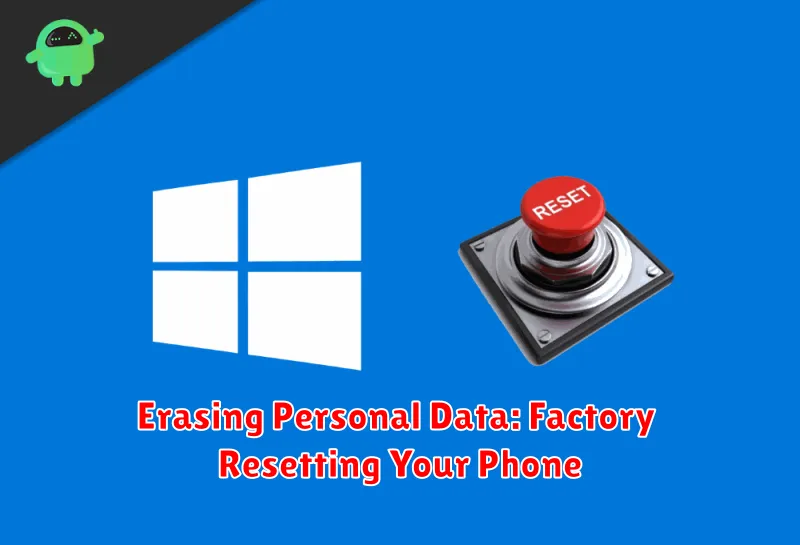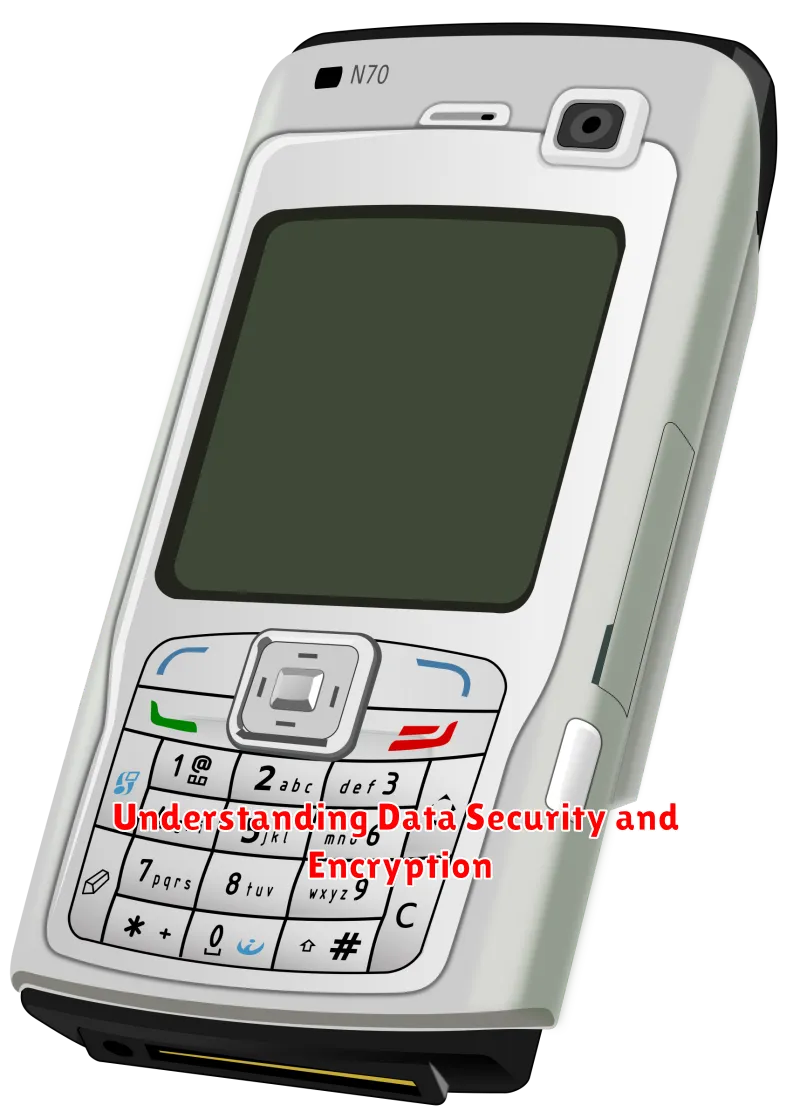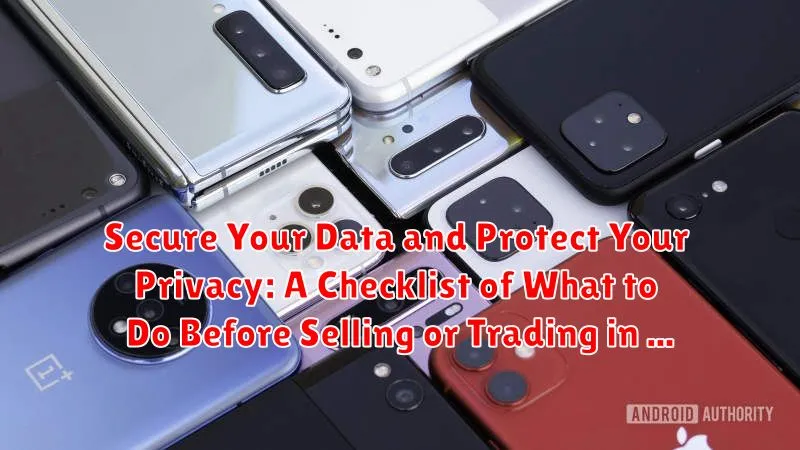In today’s digitally driven world, our smartphones hold a wealth of personal data, from sensitive financial information and cherished photos to private conversations and browsing history. As we consider upgrading to the latest model or simply selling or trading in our current device, it is critically important to ensure that this data is comprehensively secured and our privacy is fully protected. Failing to do so can expose you to significant risks, including identity theft, financial fraud, and unauthorized access to your personal life. This article serves as a vital checklist to guide you through the essential steps you must take before selling or trading in your phone, providing peace of mind that your data remains safe and your privacy is preserved.
This comprehensive checklist will cover essential procedures applicable to both Android and iOS devices, ensuring a universal approach to data security. We will explore best practices for backing up your valuable data, performing a thorough factory reset to erase all personal information, removing SIM and memory cards, and understanding the intricacies of remote device management features. By following these steps diligently before selling or trading in your phone, you can proactively mitigate potential security breaches and safeguard your privacy in an increasingly interconnected world. Prioritize the protection of your digital footprint – it’s an investment in your peace of mind.
Backing Up Your Data: A Comprehensive Guide
Prior to selling or trading in your phone, it is imperative to create a comprehensive backup of your data. This will ensure that you retain access to your important information and can seamlessly transfer it to a new device.
Methods for Data Backup
Several methods are available for backing up your data, including:
- Cloud-based backup: Utilizing services such as Google Drive (for Android) or iCloud (for iOS) to store your data securely in the cloud.
- Local backup to a computer: Connecting your phone to a computer via USB and using software like iTunes (for iOS) or the phone manufacturer’s software to create a local backup.
- Third-party backup apps: Employing dedicated backup applications available on the app store to create a backup of your data.
Data to Include in Your Backup
Ensure your backup includes the following data categories:
- Contacts
- Photos and Videos
- Text Messages
- Call History
- App Data (where supported)
- Documents
Verify the backup’s integrity before proceeding with the next steps. This confirms the successful preservation of your important information.
Removing Your Google Account and Other Linked Accounts
Prior to selling or trading in your phone, it is imperative to remove all associated accounts. This measure safeguards your personal data and prevents unauthorized access to your information.
Steps to Remove Your Google Account:
- Navigate to the Settings menu on your phone.
- Locate the Accounts or Users & Accounts section. The exact wording may vary depending on your device’s operating system.
- Select your Google account from the list.
- Tap the Remove account option. You may be prompted to confirm your decision.
Removing Other Linked Accounts:
Repeat the process outlined above for any other accounts linked to your device, such as:
- Email accounts (e.g., Yahoo, Outlook)
- Social media accounts (e.g., Facebook, Twitter)
- Cloud storage accounts (e.g., Dropbox, OneDrive)
Ensure that each account is fully removed from the device to prevent any residual data from being accessible to the new owner.
Erasing Personal Data: Factory Resetting Your Phone

Performing a factory reset is crucial to ensure your personal data is completely removed from your phone before selling or trading it in. This process restores the phone to its original factory settings, effectively wiping all user data.
Steps to Perform a Factory Reset (General Guide):
- Back up your data (as outlined in the “Backing Up Your Data” section).
- Go to your phone’s Settings menu.
- Find the “General Management” or “System” section (the exact wording may vary depending on your phone’s manufacturer and operating system).
- Look for the “Reset” option.
- Select “Factory Data Reset.”
- Carefully review the information presented, as this process will erase all data.
- Confirm your decision by tapping “Reset” or “Erase Everything.”
- You may be prompted to enter your PIN, pattern, or password.
- Allow the process to complete. The phone will restart automatically.
Important Considerations:
- The exact location of the “Factory Data Reset” option may vary depending on your phone model and operating system version. Consult your phone’s user manual if needed.
- After the factory reset, your phone will be like new. You will need to set it up again as if it were a brand new device.
- Although a factory reset is effective, it’s still recommended to take additional steps, such as removing your Google account and other linked accounts, to further protect your privacy.
Removing SIM Card and Memory Card
Before selling or trading in your phone, it is imperative to remove both the SIM card and any memory cards (such as MicroSD cards). These cards may contain personal information, contacts, photos, videos, and other sensitive data you don’t want to share with the new owner.
Steps to Remove:
- Power off your phone completely.
- Locate the SIM card tray and memory card slot. This location varies depending on the phone model; consult your phone’s manual if necessary.
- Use the SIM eject tool (or a straightened paperclip) to eject the SIM tray.
- Carefully remove the SIM card and any memory cards from their respective slots.
- Store the SIM card and memory card in a safe place.
Important Considerations:
- Ensure the phone is powered off before removing the cards to prevent data corruption.
- Avoid using excessive force when ejecting the SIM tray.
Checking for Any Remaining Personal Information
Even after performing a factory reset, it is crucial to manually inspect your phone for any residual personal data. This step ensures a higher level of data security and prevents accidental exposure of your private information.
Manual Inspection Checklist:
- Photos and Videos: Scrutinize the gallery app, including hidden folders or cloud-synced albums.
- Files: Check the file manager for any documents, PDFs, or other files you might have downloaded or created.
- Notes and Memos: Review any note-taking apps or memo applications for sensitive information.
- Call Logs and Messages: Although usually cleared with a reset, verify that call logs and SMS/MMS message threads are completely gone.
- Installed Apps: Confirm that all third-party applications have been uninstalled. Sometimes, remnants of app data can persist.
By thoroughly reviewing these areas, you can minimize the risk of inadvertently sharing personal information when selling or trading in your device. This proactive approach helps safeguard your privacy.
Unlocking Your Phone (If Applicable)
Before selling or trading in your phone, it’s crucial to determine if it is locked to a specific carrier. A locked phone can only be used with that carrier’s service, potentially limiting its appeal and value to prospective buyers.
Check Your Phone’s Lock Status: Contact your current carrier to inquire about the lock status of your phone. They can typically provide this information based on your account details and the phone’s IMEI number.
Unlocking Process: If your phone is locked, contact your carrier to request an unlock. Carriers often have specific requirements, such as fulfilling your contract obligations or paying off the phone’s balance. Once the requirements are met, the carrier will provide you with an unlock code or remotely unlock the device.
Benefits of Unlocking: Unlocking your phone increases its value and appeal to a wider range of potential buyers, as it allows them to use the phone with any compatible carrier.
Disabling Find My Device Features
Before selling or trading in your phone, it is crucial to disable any “Find My Device” features. These features, while useful for locating a lost or stolen phone, can compromise your privacy and security if left active on a device you no longer possess.
Steps to Disable “Find My Device” (Example for Android):
- Go to your phone’s Settings.
- Navigate to Security or Location (the exact wording may vary depending on your Android version and manufacturer).
- Look for an option like “Find My Device,” “Find My Phone,” or a similar name.
- Toggle the switch to disable the feature. You may be prompted to enter your Google account password for verification.
Steps to Disable “Find My” (Example for iOS):
- Go to Settings, then tap on your name at the top.
- Tap “Find My.”
- Toggle “Share My Location” to off.
- Tap “Find My [Device]” and toggle it off. You may be prompted to enter your Apple ID password.
Important: Ensure that you have completely disabled the feature and that the device is no longer associated with your account.
Cleaning Your Phone and Accessories
Before you finalize the sale or trade-in of your phone, it is prudent to thoroughly clean the device and its accompanying accessories. This not only enhances its aesthetic appeal but also ensures a more professional transaction.
Cleaning the Phone
Use a soft, lint-free cloth to wipe down the screen, back, and sides of the phone. For stubborn smudges or grime, slightly dampen the cloth with distilled water. Avoid using harsh chemicals or abrasive cleaners, as these can damage the screen coating or other components.
Cleaning Accessories
Clean any included accessories such as the charging cable, earbuds, and case. Use a similar method as with the phone, employing a soft cloth and distilled water if needed. Ensure all accessories are completely dry before packaging them with the phone.
Final Inspection
After cleaning, perform a final inspection to ensure all surfaces are free from dust, fingerprints, and debris. A clean phone presents well and demonstrates attention to detail, potentially increasing its perceived value.
Understanding Data Security and Encryption

Data security and encryption are paramount when preparing to sell or trade in your phone. Encryption transforms your data into an unreadable format, protecting it from unauthorized access. Modern smartphones typically employ full-disk encryption by default.
Here’s a brief overview:
- Encryption: Scrambles data, rendering it incomprehensible without the correct decryption key.
- Importance: Protects sensitive information like contacts, messages, photos, and financial data if your device falls into the wrong hands.
- Factory Reset: While a factory reset is crucial, encryption ensures that even after the reset, recovering residual data is significantly more difficult.
Knowing that your data is encrypted adds an extra layer of security, giving you peace of mind as you prepare your phone for its next owner.
Protecting Your Privacy After Selling Your Phone
Even after taking precautions, it’s vital to remain vigilant about your privacy after selling your phone. While a factory reset and account removal significantly reduce risk, they aren’t foolproof. Here’s how to stay protected:
- Monitor Your Accounts: Keep a close eye on your bank accounts, social media profiles, and email for any unusual activity. Enable two-factor authentication wherever possible.
- Beware of Phishing Scams: Be cautious of phishing attempts that might try to exploit your past association with the phone.
- Update Passwords: Consider updating passwords for your most important accounts, especially those previously logged in on the device.
- Report Potential Identity Theft: If you suspect your identity has been compromised, report it to the appropriate authorities immediately.
- Regularly Review Credit Reports: Checking your credit report helps identify any fraudulent activities early on.
Staying proactive and informed is crucial in safeguarding your personal information in the digital age, even after parting ways with your device.

